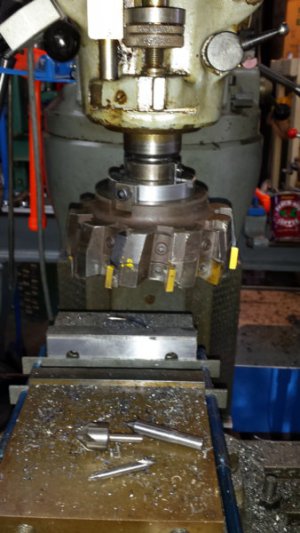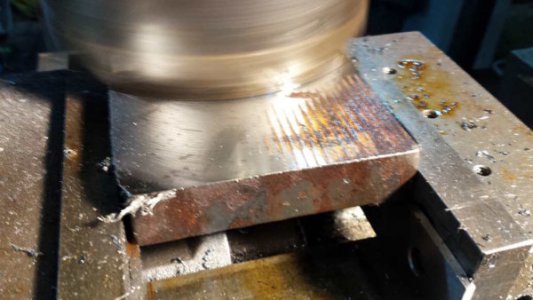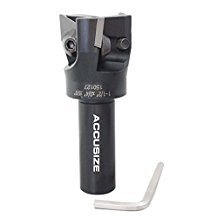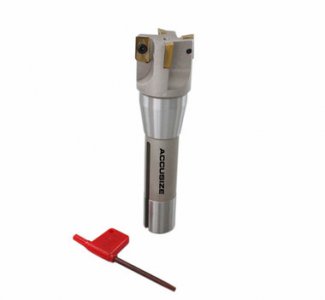- Joined
- Dec 26, 2016
- Messages
- 2,017
For the past 2 days I have been using the search function here on what tools to use for face milling Aluminum and mild steel, especially when the milling machine the tool goes onto, is a mini mill.
I found out a few important points and now I'll bring them up and ask you guys to please correct me in my findings :
1= with a 1/2 HP mill, It is best to use a smaller size indexable face mill.
2= the size of the indexable face mill should not be bigger than 1.5" you may get away with a 2".
3= the best type of inserts for a small mill (which does not have a very ridgid mill head) is, TPG32.
4= the indexable face mill head should have at least 2 inserts but 3 is even easier on the machine, less vibration.
5=If possible,It's best to use a collet than an R8 EM holder , less chance of the tool vibrating .
6= Adjust your feed rate and RPM to get a chatter free operation.
Am I missing any other important point? how about using compressed air for chip evacuation? or maybe using coolant(spray?),I do have the option to use a fly cutter but find it a bit too slow,overall I'm not comfortable using it but regardless of using that option,I still want to learn which indexable face mill is best for my mill. your comments as usual are important to me and very much appreciated.
I found out a few important points and now I'll bring them up and ask you guys to please correct me in my findings :
1= with a 1/2 HP mill, It is best to use a smaller size indexable face mill.
2= the size of the indexable face mill should not be bigger than 1.5" you may get away with a 2".
3= the best type of inserts for a small mill (which does not have a very ridgid mill head) is, TPG32.
4= the indexable face mill head should have at least 2 inserts but 3 is even easier on the machine, less vibration.
5=If possible,It's best to use a collet than an R8 EM holder , less chance of the tool vibrating .
6= Adjust your feed rate and RPM to get a chatter free operation.
Am I missing any other important point? how about using compressed air for chip evacuation? or maybe using coolant(spray?),I do have the option to use a fly cutter but find it a bit too slow,overall I'm not comfortable using it but regardless of using that option,I still want to learn which indexable face mill is best for my mill. your comments as usual are important to me and very much appreciated.
Last edited:





